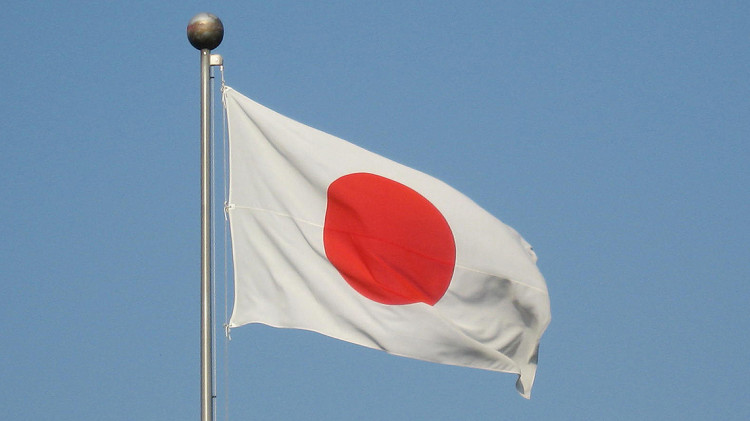The International Atomic Energy Agency (IAEA) Task Force conducting a safety review of Japan’s discharge of treated water into the sea at the Fukushima Daiichi Nuclear Power Station (FDNPS) today issued its first full report since the water discharge began last year. In its observations, the Task Force found the discharge to be consistent with international safety standards and reaffirmed the conclusions from the Agency’s comprehensive safety report issued on 4 July last year.
During its mission from 24 to 27 October 2023, the Task Force reviewed the facilities and equipment installed at FDNPS to discharge the ALPS (Advanced Liquid Processing System) treated water. It also met with Tokyo Electric Power Company (TEPCO), the operator of the plant, Japan’s Ministry of Economy, Trade and Industry (METI) and the Nuclear Regulation Authority (NRA).
The IAEA’s comprehensive report – issued before the discharge began – found Japan’s plan for handling the treated water to be consistent with international safety standards and that the discharge as planned would have a negligible radiological impact to people and the environment. Japan started to discharge the water on 24 August 2023 and has so far completed the release of three batches, a total of 23 400 cubic metres of water.
The Task Force – made up of IAEA and independent experts from 11 different countries – was appointed by IAEA Director General Rafael Mariano Grossi in 2021 to review the safety of Japan’s plan for the water stored at the Fukushima Daiichi NPS against international safety standards. The standards constitute the worldwide reference for protecting the public and the environment from harmful effects of ionizing radiation.
Based on their assessments made during the October mission, the Task Force also concluded the following:
- A robust regulatory infrastructure is in place in Japan to provide operational safety oversight of the discharge of ALPS treated water, and the Task Force was able to witness first-hand the onsite presence of the NRA and its activities in this regard.
- Based on its observations at the FDNPS, the Task Force confirmed that the equipment and facilities are installed and operated in a manner that is consistent with Japan’s plan for the release of the water and the relevant international safety standards.
- The Task Force reiterated the finding from the IAEA’s comprehensive report that optimization of protection – that is the process to determine the level of protection and safety for individuals – needs to be considered as part of the overall decommissioning of the FDNPS site. However, the Task Force fully recognized that the discharges are in the early stages and that further time and operational experience are required before progress can be made on this issue.
As part of its ongoing multiyear safety review, the IAEA will continue to conduct Task Force review missions. The Agency also maintains its continuous presence at the IAEA Fukushima Daiichi NPS Office to monitor and assess the ongoing water discharge.
Reports on ongoing corroboration of data
Separately, the IAEA also issued two reports done as part of its safety review of the water discharge detailing the latest findings of its ongoing corroboration of the measurement data underpinning Japan’s plan for the discharge of the ALPS treated water.
The IAEA is conducting a series of interlaboratory comparisons (ILCs) to corroborate the source and environmental monitoring conducted by TEPCO and other relevant Japanese authorities for the ALPS treated water discharge. Consistent with relevant IAEA international safety standards, TEPCO is required to monitor the characteristics and activity of the treated water and to establish and implement monitoring programmes in order to accurately evaluate public exposure due to the discharge and to comply with its national regulatory authorization.
The first report describes an ILC that assessed TEPCO’s capabilities for accurate and precise measurements of the radionuclides present in the treated water stored on site. Water samples were taken in October 2022 from two tanks at FDNPS. In the second report, the IAEA details an intercomparison of radionuclides analyses in samples of seawater, sediment, fish and seaweed taken in November 2022 from offshore locations and a fish market close to FDNPS. Carried out prior to the start of the water discharge, this exercise corroborates monitoring intended to establish a baseline for activity concentrations in the marine environment against which any future impact can be measured.
The ILCs involved laboratories from the IAEA Nuclear Sciences and Applications Department, an external laboratory in the Republic of Korea and laboratories in Japan separately analysing samples, followed by a quantitative comparison of the results by the IAEA. The results of both ILCs provide confidence in Japan’s capability for undertaking accurate and precise measurements related to the discharge of ALPS treated water.
Additional ILCs will be conducted in the future for ALPS treated water, as well as environmental samples, and occupational radiation protection.
Additional information such as frequently asked questions and a timeline of activities can be found on the IAEA’s dedicated Fukushima Daiichi ALPS Treated Water Discharge webpage.


